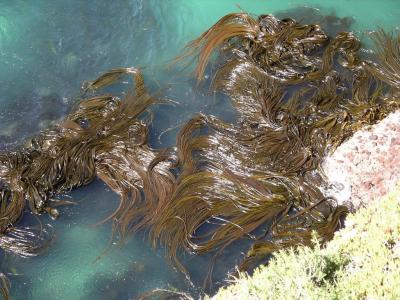A team of Indian scientists has developed a graphene-based nano-material drawn from seaweed for effective treatment of toxic wastewater without using any chemicals.

Membrane-based filtration processes are generally used to treat industrial wastewater but can’t usually fully filter out heavy metal contaminants. In order to address this problem, processes that use activated carbon, graphene or carbon nano tubes are being developed as carbon-based processes can help remove dyes and heavy metals through adsorption. Researchers at the Central Salt and Marine Chemicals Research Institute, Bhavnagar, have developed a 'green' process by using seaweed as starting material. They have synthesized a graphene-iron sulfide nanocomposite from an abundant seaweed - Ulva fasciata through direct pyrolysis technique.
The nanocomposite can be used in up to eight cleaning cycles, with only nominal loss of its adsorption capacity. Even mixed dyes could be adsorbed. A maximum adsorption capacity of 645 mg per gram for lead was achieved at neutral pH. This is the said to be the highest ever reported for any biomass derived carbon material. It could also remove highly toxic hexavalent chromium from wastewater.
Presence of high concentration of salts had negligible effect on the adsorption properties of the nanocomposite, making it a suitable candidate for the pre-treatment of highly contaminated wastewaters, explained Dr. Ramavatar Meena, who led the team.
The nanocomposite was also tested by depositing it on a commercial filter paper and using it in a customized flow cell in continuous filtration mode. Just five minutes of treatment could render highly toxic black dye solution into colorless water. It shows that our configuration can be used in combination with other membrane-based processes like Reverse Osmosis and nano-filtration for complete and effective treatment of dye and textile industry wastewater, said Dr. Meena.

